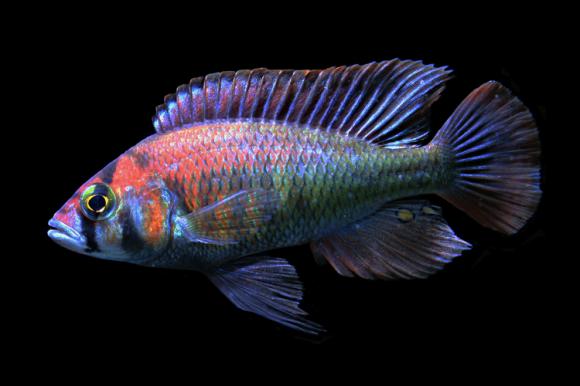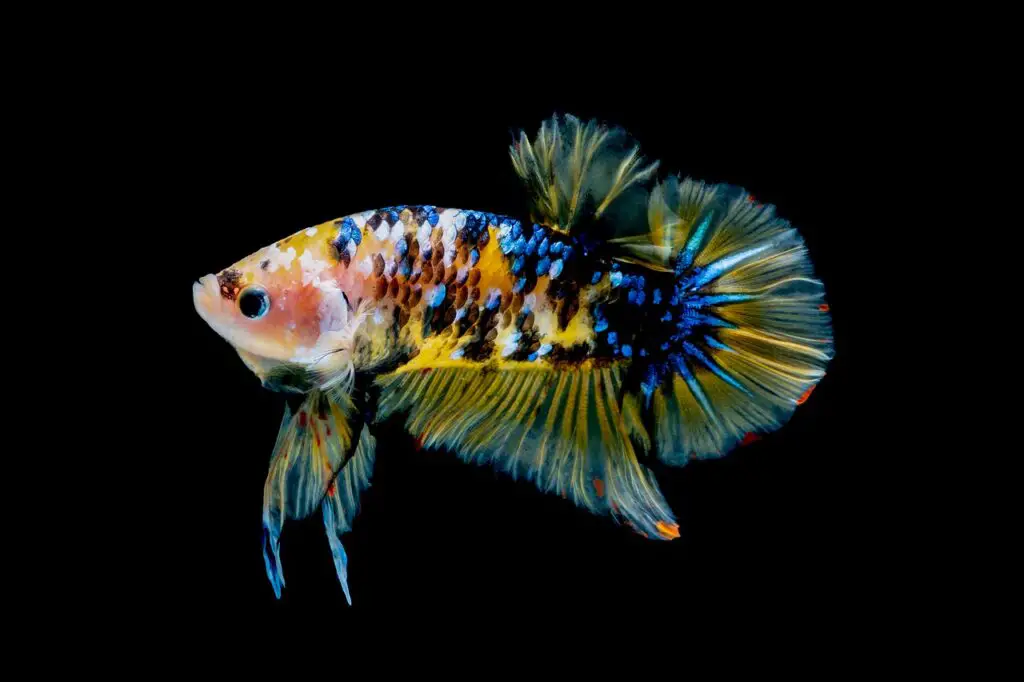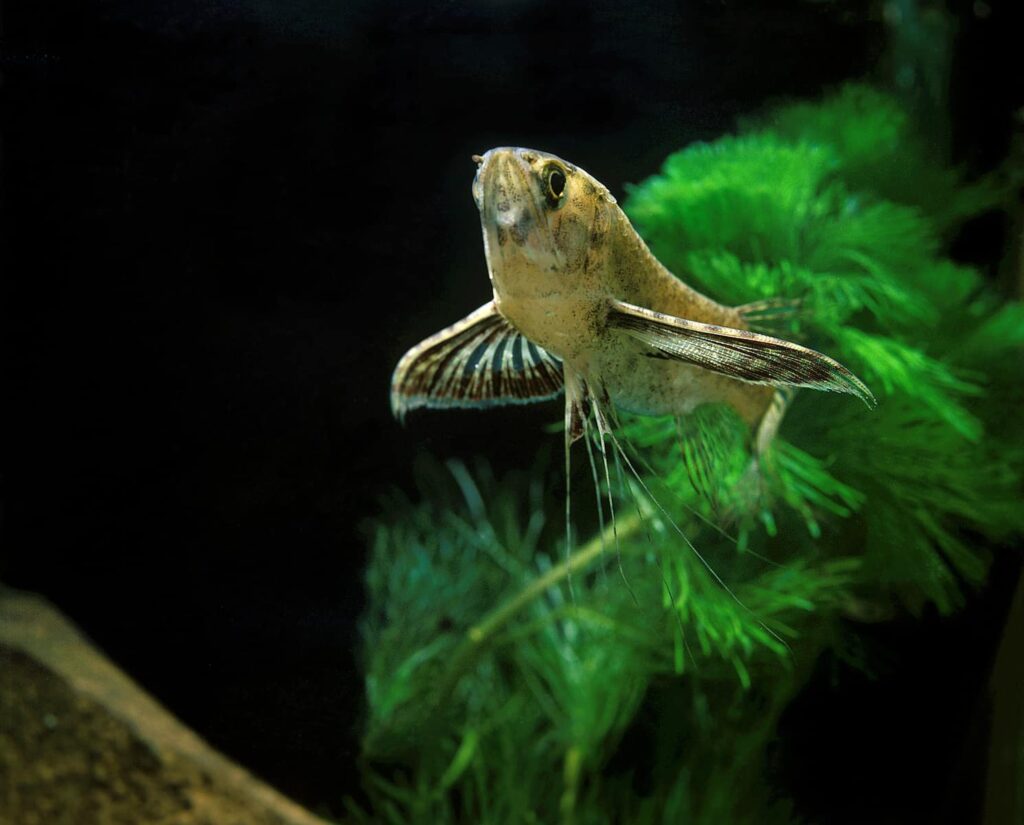Introduction
What do you know about a Kyoga Flameback fish? This fish is beautiful, and many hobbyists are keen to keep it, but it’s important to learn a bit more about it before you get one, so you know how to look after it, what to pair it with, and what to expect!
The Kyoga Flameback is somewhat unusual and may be tricky to get hold of in some situations. It’s omnivorous, brightly colored, and grows quickly, up to about 5 inches long. You can put it in tanks with a variety of other fish, including other species from Lake Victoria.
Let’s learn more about the Kyoga Flameback and what sort of fish it is, so you know whether to get one for your aquarium.
What Do I Need To Know About This Fish?
This fish has several common names, including the Kyoga Flameback and the Christmas Fulu. It is sometimes also referred to as Haps or Lake Victoria Haps cichlid, despite the fact that it was reclassified from being Haps, and now belongs to the genus Xystichromis.
Scientific name: Its full scientific name is Haplochromis Xystichromis.
Average adult fish size: This fish can grow up to about 5 inches, but most will be a little smaller than that. The females rarely reach as much as 4.5 inches.
They are very beautiful fish, with light blue bodies and flame-red tails, faces, and flanks. The underside of the fish is bright yellow. They often have black stripes on their faces and their sides.
Females tend to have less vivid colors than males, but can still be attractive. The beauty of the fish has contributed massively to its popularity.
Place of Origin: The Kyoga Flameback originated in Northern Kenya. It is a threatened species, and is now only found in Lake Kanyaboli, in Northern Kenya. It used to also be in Lake Victoria, but it has disappeared from this lake, and is not known to appear anywhere else.
How Big Does A Tank Need To Be?
It’s always important to make sure that you aren’t putting your fish in an aquarium that is too small. A small aquarium will cause stress and may make your fish more susceptible to diseases. You should therefore keep your Kyoga Flameback in a tank that is at least 48 inches long.
Typical tank setup: These fish should be fine in an aquarium that is 55 gallons and rectangular, as long as you meet the length requirement and do not crowd the aquarium too much with other fish.
In terms of living with its own kind, the Kyoga Flameback likes to be kept in either pairs or small groups, and you should only have one male per group, or they may fight. Make sure you provide more space for groups of fish than for pairs.
Which Fish Can The Flameback Share Its Tank With?
These fish are somewhat aggressive, and therefore you need to be careful about what fish you put into the tank alongside your Kyoga Flameback if you don’t want fighting and injuries. The male Kyogas are more aggressive than the females, but all of them can be territorial.
Victorian Haps and African cichlids make good tank mates, as long as they aren’t overcrowded. If you fill the tank too full, you may see fighting despite your best efforts.
Other fish that come from Lake Victoria or Lake Kanyaboli may prove good tank mates for the Kyoga too. Some people put the Sadler’s Robber and the Fischer’s Victoria Squeaker into the tank and have great success with this.
Do not put predatory fish in with your Flamebacks, especially larger ones. They may attack or eat your Flamebacks, and will certainly cause high stress levels. Choose only fish that are reasonably peaceful, or too small to pose a threat.
What Conditions Do The Fish Need To Thrive?
A tank needs to have various other things in order to make it suitable for Flamebacks.
Necessary temperature: 24-27 degrees C / 74-79 degrees F.
Water chemistry: pH 8.0 if possible (but okay anywhere between 7.2 and 8.6)
You should make sure that the tank contains a suitable substrate, because Flamebacks love to dig. You should therefore choose a soft, non-sharp substrate, such as sand or gravel, and avoid any sharp rocks that could harm the fish.
Plants will also be a must; choose some floating ones that you can anchor to driftwood, and admire your fish darting about among them. Adding plants can help to reduce aggression if you are having problems among your fish, because it breaks the line of sight.
How Do You Feed Flamebacks?
This fish is omnivorous and easy to feed – you can opt for various foods. Decomposed plant matter will go down well, but you should also try to occasionally add live foods so that the fish get to enjoy hunting. Use frozen foods instead if necessary.
Brine shrimps, small earthworms, and spirulina are suitable foods. Don’t over-feed them with meat; they must eat some plant matter too in order to stay healthy. They don’t eat fresh plants, so make sure you supply some rotting matter.
How Do Flamebacks Breed?
These fish need caves to spawn in, and they are easy to breed in captivity, despite their rareness in the wild. They are maternal mouthbrooders. When they are ready to breed, you will see the male digging a hole in the substrate, and then he and the female will mate.
After mating, the female will relocate to a hiding spot in the aquarium, and remain there for around 2 weeks. Keep other fish away if possible during this period, as this will give the fry the best chances of survival. Females will produce around 30 eggs when they are young, but can produce up to 70 when they are mature.
Conclusion
The Kyoga Flameback makes a stunning addition to any tank and despite its rareness in the wild, it’s very popular with hobbyists. Make sure you set your tank up to maximize the suitability for the fish, and don’t add unsuitable tank mates or predatory fish that might eat them. Give your Kyogas plenty of hiding spots and plants to keep their stress levels low.



